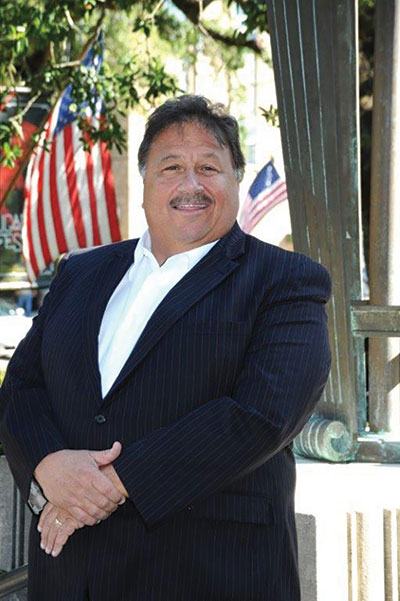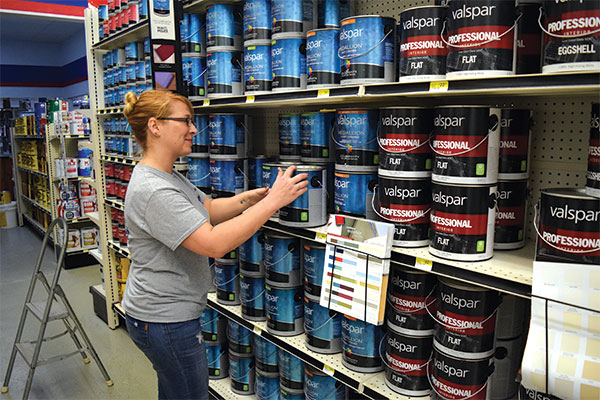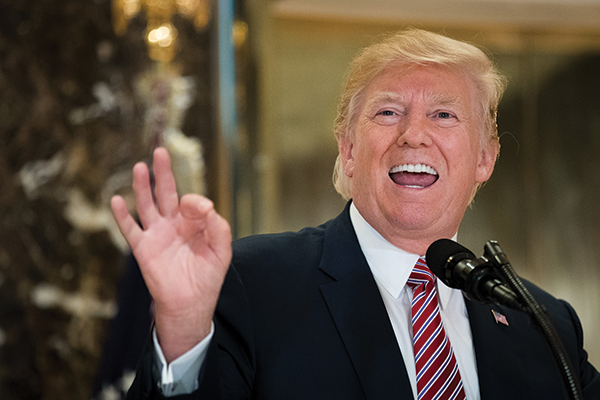
The State of Fiscal Affairs and Capital Projects in Terrebonne Parish
January 16, 2019
Dufrene’s Evolves with Always-Changing Lumber Industry
January 16, 2019
OIL EXPERTS SAY THAT’S JUST TWITTER TALK
The price of oil is down — way down — to start 2019.
In the past 90 days, the price sunk from more than $75/barrel to the $46/barrel levels we’d seen to start the New Year — a more than 38 percent decrease that has caught the attention of all local business owners who want the trend to reverse in the near future.
As the price has dropped, so has the price of gas.
As gas has fallen, President Donald Trump has been outspoken, saying in a Tweet on January 1 that he believes low gasoline prices are an indirect tax cut for Americans and a boost to the national economy.
In another Tweet, he added that he’s urged OPEC to continue to boost supply, which will keep prices low for the future, something he called a “win” for America.
But industry experts say that Trump’s words on social media don’t have as much weight as he may believe.
Despite the President’s outspoken statements on the topic, oil and gas experts say that the price of crude in the future will be dictated by OPEC and its member nations — a topsy turvy relationship that has had roller coaster-like ups and downs throughout the past 12-18 months.
At press-time, industry leaders say that forecasts for oil’s future aren’t worth the paper they’re printed on because there’s just no way to predict supply, demand and the future of unstable oil-producing nations, which could greatly impact the supply in the coming months.
JP Morgan said in November that they believe crude prices will average $73/barrel in 2019, which would mean a significant increase is coming in the weeks ahead. But their report also said that their previous prediction was for an average of $83.50/barrel oil, adding that there is great uncertainty in the market, which makes the future widely uncertain.
“I think anyone who thinks the picture is crystal clear is looking through fogged lenses,” said Scott Darling, J.P. Morgan’s head of Asia Pacific oil and gas. “There is great uncertainty right now within the industry and the coming weeks and months will be decisions that will have great influence on where things go in 2019 and beyond.”
So here is what we know for certain.
In December, OPEC and non-OPEC-member nations met and agreed to take 1.2 million barrels of oil per day off the market for a period of six months — a cut that began in January and which should stop the price from significantly tanking further in the future.
“That was a good step for a rebound,” a report issued by Frost and Sullivan stated in Dec. 2018.
Experts say that what happens surrounding that cut in supply will be huge for the future of the price.
They contend that if the supply cut continues through all of 2019 — past the initial, six-month period, then it could be good for a price rise that could last throughout the better part of the year.
But if member nations balk at the cut and step up their production, it could also impact the price, keeping it steady at a level near $50/barrel for most of the next year.
Trump said during a conference call with reporters on Jan. 2 that this is what he’s rooting for, adding that he’s been in contact with OPEC leaders throughout the past several months.
“Let the damn oil flow,” Trump said to reporters. “Cheap gas is good gas for the American people.”
But there are also concerns that the cut in supply will not greatly shake the market because of demand issues on the global market.
Darling said the No. 1 reason for the price drop — above all other factors — was that demand for crude globally dropped in 2018, which helped to send the price into a tailspin.
But while demand remains in flux, other factors like unstable politics in producing nations like Venezuela and other nations could create a supply shortage that will outweigh the drop in demand and could keep prices up.
“In some parts of the world, you’ve still got aging oil infrastructure, which leads to unplanned maintenance,” Darling said. “It only takes a few of these events and you suddenly get more support to the oil price.”
Of course, while the rest of the country may root for cheap gas, the Houma-Thibodaux area is a minority in that higher gas prices mean more deepwater drilling and more work for the local economy.
Industry leaders have contended that prices around $70-80 per barrel would support the work force locally with plenty room to spare thanks to Trump-issued policies that have greatly deregulated the industry, thus making it cheaper to drill.
“I think anyone who thinks the picture is crystal clear is looking through fogged lenses. There is great uncertainty right now within the industry and the coming weeks and months will be decisions that will have great influence on where things go in 2019 and beyond.”
– Scott Darling•










